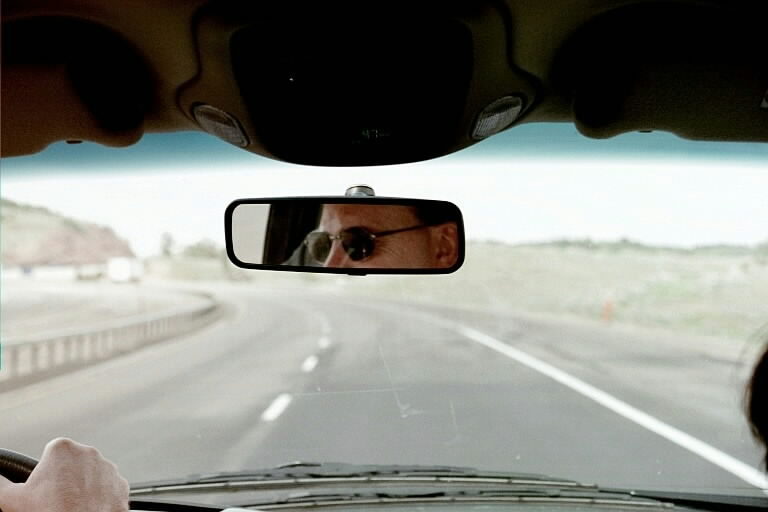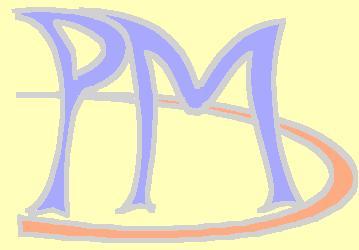

Photo by Sharon Mulligan Logo by Dennis Mulligan
Here are some books and links I like; I hope you'll find something here you like too.


Photo by Sharon Mulligan Logo by Dennis Mulligan
|
Books
|
Comments
|
|
Your
Life as Art by Robert Fritz
|
Robert Fritz's newest book and the companion text for the course Creating Your Life. Currently only available through the Robert Fritz office (802) 348-7176 (although I expect to have some available shortly). |
|
The Path of
Least Resistance by Robert Fritz
|
This contains Robert Fritz's groundbreaking work on structure and the creative process. |
|
Creating
by Robert Fritz
|
This gives further insight into the nature and practice of the creative process. |
|
The Path of
Least Resistance for Managers by Robert Fritz
|
How to design organizations for success. Buy it. Read it. Do it. This contains the famous "eleven questions" to ask and answer when you are designing or re-designing an organization. |
|
Art and
Visual Perception : A Psychology of the Creative Eye by Rudolf
Arnheim
|
How do we see? How come we sense things in a painting? This is more immediate than Arnheim's more widely known Visual Thinking. I suggest reading this one first. Arnheim thinks relationally and structurally. |
|
Visual
Thinking by Rudolf Arnheim
|
The classic. Paradoxically, this is mainly text. You have to supply the visual thinking to match. Evidence and support for the idea that we think visually, whether or not we have been aware of it. |
| A detailed examination of art works which helps to illuminate the ideas in Art and Visual Perception and Visual Thinking. | |
|
Experiences
in Visual Thinking by Robert McKim
|
This is the basis for the mandatory (for certain disciplines) freshman course at Stanford University. This covers practical visual thinking including sketching and group drawing. The Vizability software package is based on this. |
|
The Fifth
Discipline : The Art and Practice of the Learning Organization by
Peter M. Senge
|
I think of this as mainly about systems thinking, although it is more. It includes some of Robert Fritz's ideas, but with some adaption which dilutes them while making the general idea more accessible. |
|
Architecture Plus. This contains principles on how to create poetic buildings and ennvironments, which are good for people. Just as in a poem an element may be designed to work simulaneosly with several parts of the poem's structure, so too do elements work this way in good archtiecture. (I think this helped inspire my attraction to the domain name PoeticMind.com.) Even if you don't use it for design, read it to help understand why you find some spaces and places satisfying to be in, and others dissatisfying. The author, an architect, thinks of them as a single book. Most people just read A Pattern Language. This book inspired an attempt at a similar approach in object-oriented computer architecture. |
|
|
The Way
Things Go - Video by David Weiss (II), Peter Fischli
|
This is a short film. I first saw part of this at museum in Barcelona, which was a good environment for it. This is hard to describe, but think Rube Goldberg cartoons brought to life. For those learning about Robert Fritz's Tension-Resolution systems, they are visibly happening before your eyes. |
|
How the Mind
Works by Steven Pinker
|
From MIT to you. He's thought about this a lot, and he's an articulate writer. He also wrote The Language Instinct. |
|
Film As Art
by Rudolf Arnheim
|
One of Arnheim's first books, it's subject is movies before sound, when it was not yet understood they were art. I can't say much more yet, I haven't gotten to it yet. |
|
Entropy and
Art: An Essay on Disorder and Order by Rudolf Arnheim
|
The subtitle is more accurate. It is an exploration of order and disorder. I'm not sure it arrives anywhere, but perhaps you'd like to join in the thought process. Entropy is a tangled word which seems to have different meanings for layman and scientists, and considerable confusion (which I'm not able to enlighten you about) when the concept of Entropy was mingled into information theory. My general idea of Entropy is that things in the universe eventually wind down and dissolve into featureless stuff. How come then, so many really well-organized things exist? |
|
The
Psychology of Everyday Things by Donald Norman (suggested by Edward
Tufte)
|
This is about design and designers. |
|
Light and
Color in the Outdoors by Marcel Minneart (suggested by Edward
Tufte)
|
Edward Tufte loved this. I'm having trouble getting into it. He called it a life-changing book... I think because of learning to really look at things. |
|
Hypnerotomachia
Poliphili: The Strife of Love in a Dream by Collona
(suggested by Edward Tufte)
|
Well, this is actually beyond me at this point. But it is one of only two book for which Tufte has written a review on Amazon. |
|
Mastering the
Techniques of Teaching by Joseph Lowman (suggested by Edward Tufte)
|
Tufte suggested this as an aid to learning the skill of making presentations. |
| Includes something by Robert Fritz and about applying the creative process to education. | |
|
Becoming a
Technical Leader : An Organic Problem-Solving Approach by Gerald M.
Weinberg
|
I've got it, it looks good, but I haven't read it yet. |
|
Are Your
Lights On? : How to Figure Out What the Problem Really Is by Gerald
M. Weinberg
|
Just what the title says. Look before you leap. |
|
An
Introduction to General Systems Thinking by Gerald M. Weinberg
|
What it says. |
|
The Secrets
of Consulting by Gerald M. Weinberg
|
Real-world aspects of consulting, including "Most people don't want your advice." |
|
Handbook of
Walkthroughs, Inspections and Technical Reviews by Gerald M.
Weinberg
|
This is from the 70's, but the psychology of this still applies. |
|
Quality
Software Management : Systems Thinking by Gerald M. Weinberg
|
Beginning Systems Thinking in relation to software development. |
|
Zen and the
Art of Motorcycle Maintenance by Robert Pirsig (get the 25th
Anniversay edition)
|
The subtitle is "An Inquiry into Values". Pirisig chases the answer to "What is Quality?" on a Chautaqua by motorcycle. Get the slightly more expensive 25th anniversary edition for the new introduction. Follow up by reading Lila, Pirsig's lesser-known second book from the 90's. (I haven't yet, but I plan on it.). See also the Lila/ZMM discussion at http://www.moq.org. I think that The Timeless Way of Building and this book are chasing similar ideas. (Frank Newton and his mom have taken a try at writing a screenplay based on this.) |
|
Lila: an
Inquiry into Morals by Robert Pirsig
|
I haven't read it yet. Pirsig considers considers it much more significant, and from those who have read it, I gather I should read it, and so should you! |
| Links | Comments |
| Robert Fritz's website | Structure and the Creative Process. |
| Lindamood-Bell Learning Processes | Learn visual thinking with their Visualing/Verbalizing (V/V) training. |
| Vizability | Learn visual thinking skills with a book and CD-ROM |
| Amazon | Amazon books |
| PEP | Parenting Encouragement Program |
| Metanet | Conferencing system |
| Peter McGovern's Links Page | Great page of links |
| Dr. Melvin Morse's Website | Inquiries into Near-Death experiences and the relationship of brain to spirit. |
| Brainstorms | Conferencing system |
| Inspiration | Outlining software (and mind-mapping) |
| The Brain | Store your "thoughts" and link them together. |
| Win Wenger and Image Streaming | Win Wenger has developed a technique called Image Streaming. |
| Info on Christopher Alexander | An introduction to Christopher Alexander |
| PatternLanguage.com website | Christopher Alexander's website |
| Earthlights-Big and Earthlights-Small | An NASA picture of lights on Earth. You can see population density. From Astronomy Picture of the day. |
| Title: |
Creating Your Life |
| Time: | Saturdays 9:00 a.m. - 11:30 a.m. |
| Date: | February 22 - March 29 (adjusted for 1-week snow
delay) (No class March 1) |
| Location | 10100 Connecticut Ave. Kensington, MD 20895 (Kensington Baptist Church, 2nd Floor) From I-495/Beltway: Take exit number 33, MD-185 N/CONNECTICUT AVE North toward KENSINGTON. Go 1.42 miles. Make a LEFT TURN at DRESDEN ST and then into the Kensington Baptist Church. Park in the back lot and use the back entrance (where it says PEP) and go up the stairs to the second floor. Mapquest Note: Mapquest has the correct location, but their directions incorrectly describe a U-Turn to get into onto Dresden. But you can see the church, which is on the corner. |
| Price: | $195 PEP Leader Price: $175 A $50 deposit reserves your place. |
| Registration: | Call: 301-585-9377 Email: John Mulligan Mail to: 9315 Greyrock Road Silver Spring, MD 20910 |
| Description: |
Creating Your Life is a course designed to support you in creating the results you want in your life. It helps you look at what matters most to you, and to start living in the creative orientation. The course was designed by Robert Fritz - here's his website for more information. |
| Brochure: | Download the MS-Word Brochure or the .pdf Brochure |